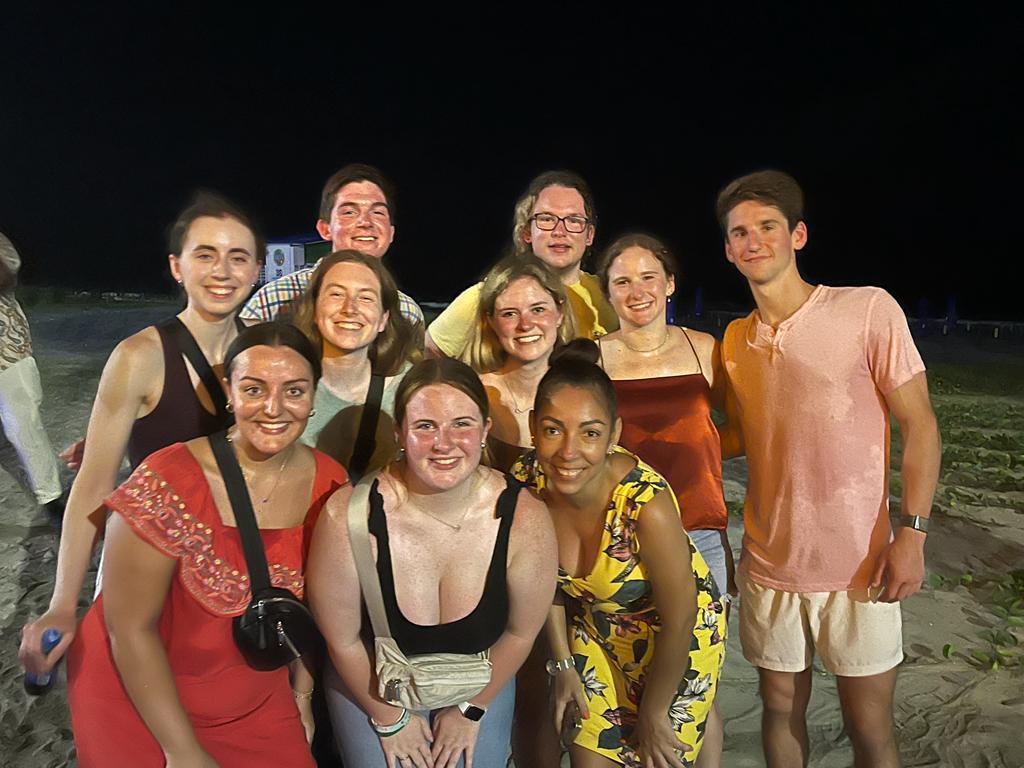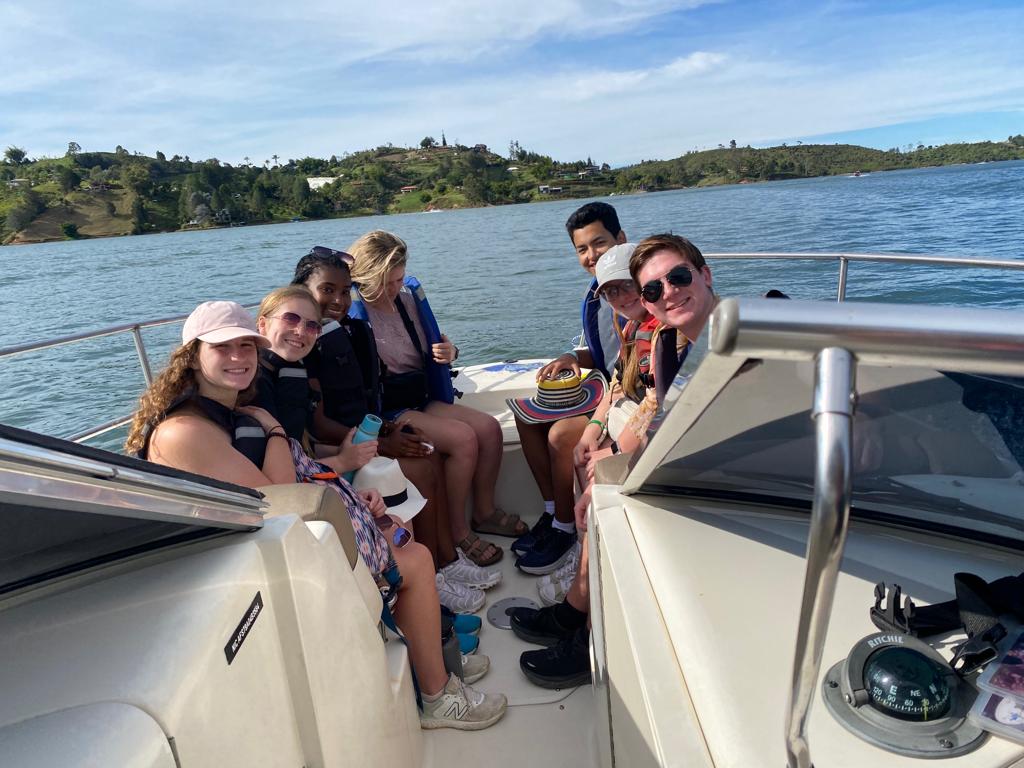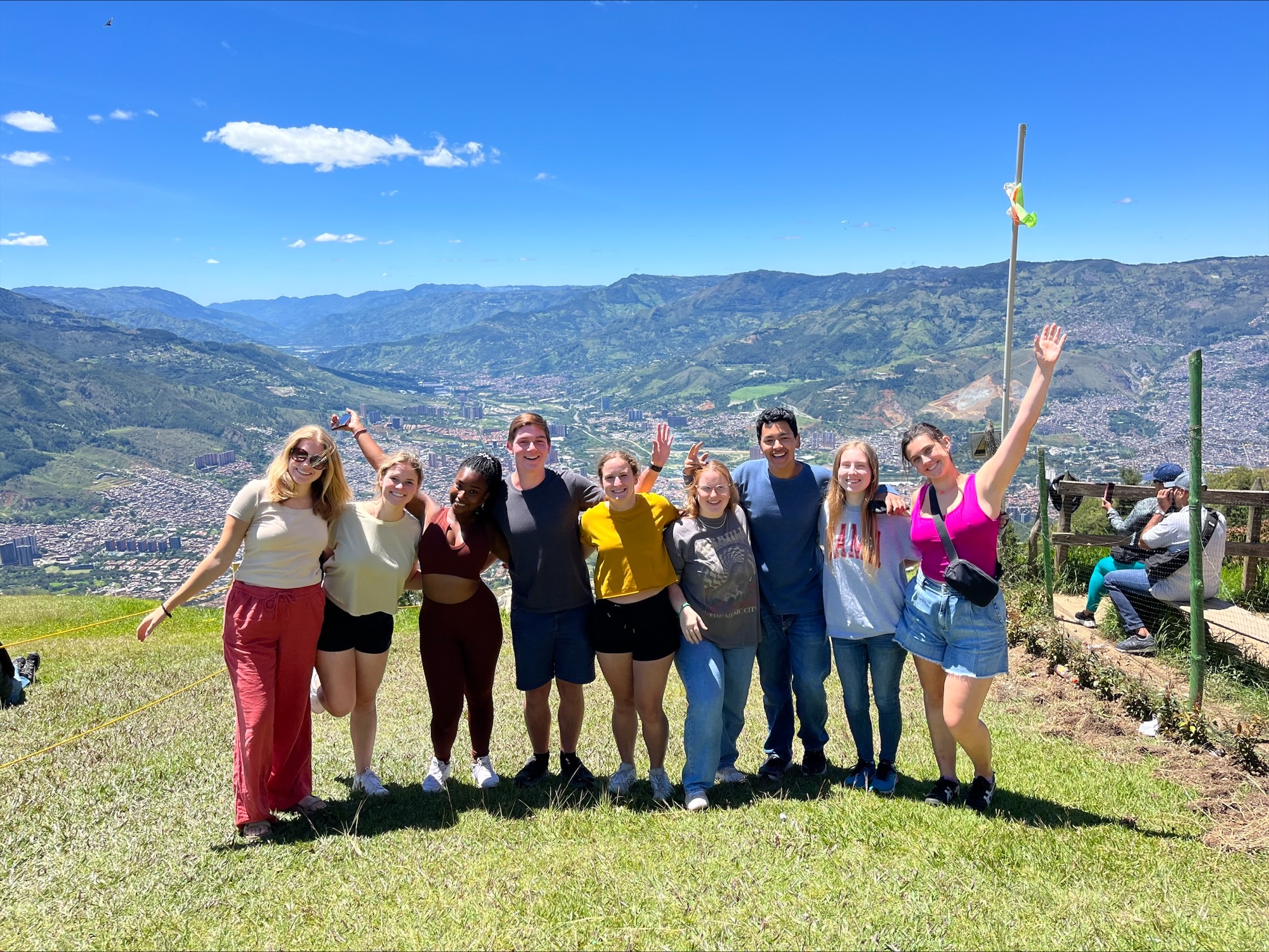Wow! It has been a really fun few weeks in the UA in Colombia program. We are on the final two weeks of our program right now, and I think now is the perfect time to reflect on the amazing memories I’ve made, as well as share some advice when it comes to travelling in Colombia.
Tips for Uninorte and Barranquilla:
-Teaching styles and norms are different in different countries. Our professors often did not provide formal rubrics/guidelines for our projects and essays. While the final grading tended to be pretty forgiving, if this lack of transparency in grading guidelines is going to stress you out, I would recommend meeting 1-on-1 with your professors to clarify expectations before the due date.
-Uninorte-thank goodness-has air conditioning in the classrooms, even though most of the area between classrooms is outdoors. Because of this, I would recommend wearing light, breathable clothing all day but packing a jacket to put on in the classrooms, as they can get pretty cold. On the topic of clothing, I would also advise you to focus on packing light, breathable clothing. Colombian natives dress much nicer than we do, and you will see them walking around in jeans and a blouse in 90 degree weather. As much as you want to fit into this norm, I can promise you, no matter what you wear, you WILL stand out. Americans are uncommon in Barranquilla, other than during Carnaval, and most people can tell on sight that you are not from Colombia. Because of this, I would recommend focusing on packing clothes that you’re comfy wearing in high temperatures and humidity, rather than solely packing for fashion. You will want a few nicer outfits for indoor events and Instagram pictures, but after the first few weeks of sweating your butt off every day, you’ll probably revert to wearing athleisure the majority of the time. Odds are, even with the outfit change, the locals will look at you no differently, as your clothes have very little to do with their perception of you as a foreigner.
-On this topic, be aware that people WILL look at you. They may even stare you down. Most of these people are every kind and are in no way intending to offend you, they just aren’t used to seeing Americans at times other than Carnaval. Odds are that the only Americans you will encounter the entire trip are members of your group and the other university that participates in Uninorte: Verano, Georgia Southern. Don’t let the attention bother you. Either ignore the stares or walk up and start a conversation because most of the people staring are just genuinely curious as to why you’re in Barranquilla. People in Barranquilla are very kind and would love to hear about your studies in the city, as well as ask you questions about the U.S. They are also usually incredibly patient with your language skills-most of them are also attempting to learn another language like English or German and are well aware of the difficulties- and will kindly help correct your grammar and teach you new vocab words.
-Using school resources: If you are looking for a quiet place to study, the campus library is a great space to use. There is also a computer lab in the bottom of Du Nord Cafe and plenty of table space in Du Nord Plaza- the main dining area- to get some work done. If you are trying to use the on-campus gym, the process to sign up is slighlty complicated, and I had a lot of trouble figuring it out. You will need to go to “El Salon,” the hair salon on the other side of Du Nord Cafe. You will have to pay for the gym at the front desk. When I went, it was about $20/month, but prices may change by next summer. Then, you will take your receipt to the 2nd floor of the Coliseo Cultural y Deportivo Los Fundadores into the admin office. There, you will do all the paper work for your gym access, and you’ll need your passport number or some other identifying number. After your information is in the system, you can go downstairs to the gym and check in with the workers there.
General Tips for When you Travel:
-Safety: Because of your visibility as a foreigner, there will be some people who try to take advantage of your naivete. Make sure to always travel with others, be aware of your surroundings, and be willing to say NO. Beggars will swarm you, especially outside the commercial centers and touristy areas, asking you to buy a sucker or candy or an artisan good. If you’re uninterested, give them a polite “No gracias” and walk away. When you do want to buy something, always ask for the price upfront, double-check the price, and then hand them the cash immediately upon purchase. Don’t allow yourself to run up an open tab, especially at areas like beaches, as this allows vendors to ask for more money later. Finally, when making purchases, be sure to, as the locals say, “no dar la papaya.” Don’t put your bag down while counting change in your wallet, or leave your phone in your back pocket while deep in conversation with a vendor. You need to have all of your valuables accounted for at all times, even in group settings, and make sure that your cash is easy to access without flashing all of your money to passerby.
-Uber/In-Drive/Taxi: My personal favorite method of transportation in Colombia was Uber. I was able to connect my account to my debit card, so I never had to worry about having exact change to pay, like for an In-Drive or Taxi. I also like the added safety features, like being able to share my route with my parents and forcing Uber drivers to ask for my in-app pin before starting the ride. One downside to Uber is that it is technically illegal in Colombia. Because of this, drivers will not have “Uber” signs, they will want one person to sit in the passenger seat, and they will want you to request pickup away from where there are large groupings of taxis, as taxis will often report Uber drivers to the police. If you prefer to use In-Drive or Taxis, just be sure to have enough cash to make the drive, and know that not all drivers have change. In any ride, I would recommend letting someone else know where you are and having a GPS pulled up on your phone to ensure your driver is driving in the
correct direction, just as you would in any unknown place. Additionally, don’t be afraid to talk to your driver. Some of my best Spanish -speaking practice came from talkative Uber and Taxi drivers, many of whom are eager to share information about their city or ask questions about the U.S.
-If you wish to travel during your free weekend-my group travelled to Medellín- I would recommend booking your flight directly through the airline site. A few of us tried to book flights through cheaper third-party sites, but our credit cards were rejected for being foreign cards, even though we used Visas, which are considered to be universally accepted cards. For only $20 more/ flight, we were able to book through the airline itself, which not only allowed us to actually book the flight, but also gave us the extra security of not having to trust a third-party site.
-Bring a sizable backpack or duffle bag to make weekend trips easy. You likely will not have room in the transport van to pack a suitcase, so you will need to be able to pack light.
-Many of the vendors and services you will use while travelling prefer or only accept cash. While for some vendors it is a personal preference, in other areas, there is literally no electricity to power a card machine. Some friends and I went to a semi-remote beach in Santa Marta and went to pay with a card for our meal, only to learn that there was no electricity on the beach. We had to hike up a small mountain to get back to the mainland and pay for our meal, a situation that wouldn’t have happened had we brought enough cash with us. You will also need cash for services like Taxis and In-Drive, as well as street vendors and some restaurants and stores. I exchanged $500 USD worth of cash in the Miami airport pre-departure, and I have used this cash, as well as our weekly cash allowances from the program, the entire trip. Other students who brought less cash to Colombia have to frequently visit the atm, an experience that can be a bit nerve-wracking depending on where you go, and can also include additional fees. I would recommend exchanging money before you leave the U.S., either at the airport or at your local bank.
-Don’t be afraid to try new things. Colombia has a very rich culinary culture, and I would recommend trying as many different foods as you can. I have very rarely encountered a food that I don’t like here in Colombia, but when I do, the food is usually so cheap (due to the COP to USD exchange rate) that it doesn’t matter. Colombia also has an electric night scene that can be a bit intimidating at first, especially if you aren’t familiar with the music or the common dancing styles. Instead of letting this scare you away, go out anyway and let a local teach you how to dance, or figure it out together with your friends. Once you get the hang of the dances and the music, you’ll have an amazing time enjoying the unique experience of a night out in Colombia.



If you’re planning to travel to Colombia next summer, I hope these tips can offer some insight into what to expect throughout your program and help reaffirm your hopes and expectations regarding this trip. If you’re still on the fence, I hope you’ll read the other Bama Blogs, check out our instagram, @uaencolombia, and talk to Dr. Worden about this amazing opportunity. With only 2 weeks left in this once-in-a-lifetime program, I am so thankful that I chose to come to Colombia, despite all of my fears and uncertainties. I can’t wait to enjoy my last 2 weeks, though I know they’ll be bittersweet, as I’m nowhere near ready to say goodbye to beautiful Colombia.
Ciao for now,
Erin
